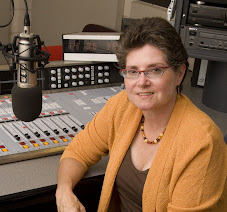This week on Lincoln Avenue, I’m talking with Pat Fagan about the history and the future of the Youngstown Playhouse. I think of the Playhouse, together with the Butler and the Youngstown Symphony, as one of the “foundation stones” of the local arts and culture scene. It’s been around for more than eight decades, and despite some recent struggles, its leaders and volunteers are still committed and excited about its work.
You can hear that excitement when Pat talks about her own experiences there. We often talk about the arts in terms of the entertainment and enrichment they bring to audiences. When we think about the value of helping to make art, we too often focus on children, as in discussions of the importance of arts education. But Pat reminds us that participating in the arts – acting in a play, helping to build sets, singing in a choir, taking photographs – improves adults’ quality of life, too. It isn’t just a matter of high-minded things like expanding one’s cultural perspectives. It’s just plain fun.
I moved to Youngstown 20 years ago, and I’ve always been amazed at the quantity and quality of arts programs in our area. We have at least half a dozen community theaters in the Mahoning Valley, plus multiple museums, and a vivid array of music, visual arts, and creative writing offerings. All of that can be a great asset, helping to draw newcomers to the area and develop strong community networks for those who are already here.
But there’s a challenge, too. As the Valley’s population shrinks, our unemployment rate rises, and the economy struggles, the competition for both audiences and funding gets tighter. From what Pat tells me, we seem to have plenty of talent and interest to keep all of these projects going. What we may not have is the money they need to thrive.
For now, though, the Playhouse is starting a new season. Auditions are going on this week for Dracula, and there’s more to come. Perhaps a production of Dracula is a kind of statement: local theater as the forever undead?
